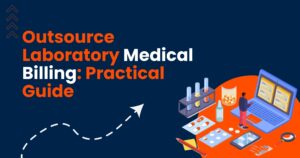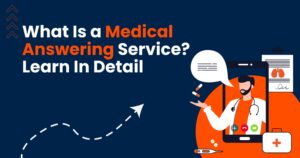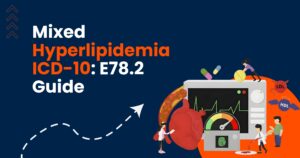Healthcare seems more penetrated in science and data, but the marketing world has a selling lens to examine it. Anyone who has needed medical care knows its emotional perspective, especially at the time of treatment or discharge. People want to feel safe, understood, and respected. Many medical facilities and doctors choose emotion in healthcare marketing by reflecting on compassion and care as the core of their services to connect with their audience and stand apart from the crowd.
As the patients put their and others lives in the hands of the medical doctors, they deserve trust. Despite the smartest techniques and the healthcare professionals in the market, even the trove of supporting data can’t beat the worth of gut instinct. That’s where empathetic marketing practices come into action. How do we make that patient-provider bond? The same is targeted in this article. Let’s understand the nitty-gritty of the topic.
What is Emotional Marketing? – A Concise Overview
Tapping into the key audiences, emotions can play a role of game-changer. In the simplest form, emotional marketing is a kind of strategy that directly taps into different types of customer’s feelings to elicit the desired response, such as buying, sharing with others or simply taking notice. Emotional ads coupled with authenticity in messaging work as the driving force in decision-making and stirring the pulse of the audience. Some other tipping aspects of emotion-based marketing are uncovered below.
- It influences the brain with targeted information simply and quickly
- Forges a positive response to a brand campaign
- Use of visual storytelling to trigger emotion that tugs at the heartstrings
- Joy and love are at the center of emotional marketing.
- Strategic emotional advertisement banks on the irresistibly logical ground
- Whether it’s nostalgic or aspirational emotion, increases loyalty and purchases
- An emotional marketing campaign targets the emotional instincts of the key audience
Let’s inspect a study and real-world examples that truly demonstrate that campaigns infused with certain feelings narrow down the actual scope and drive it home. Dove, a beauty brand owned by the Anglo-Dutch company Unilever, ran a ‘Real Beauty’ campaign. It focused on self-approval and body positivity that led to a sharp rise in sales because it successfully forged a deeper bond with the brand’s female audience-base.
Forbes published a research review about the strong influence of emotional marketing. It reveals that emotionally associated customers have a 2x higher lifetime value than the customers merely ‘’highly satisfied’’. Feel the worth of emotional connection between patient and doctor for the desired results.
Why Emotional Marketing Strategies Work Effectively
An emotionally driven brand content sticks to the hearts of the audience. It not only strengthens customer trust but also produces brand advocates. Is it surprising? Let’s understand the concept of human appeal. Making a social post is a trivial thing nowadays from a few clicks to curate it and bring it to the public lens but producing a successful campaign is a hard nut to crack for many. The healthcare industry is a complex domain where emotional marketing comes with various intricacies. People are somehow hardwired to respond to an emotional journey. It’s a human aspect that needs to be tackled in this way.
- Use of graphic full of sentiments to effectively display patients’ testimonials
- Patients can have first-hand experience in sensing the authenticity and vulnerability of messaging
- Reliance on genuine testimonials holds more weight than other marketing strategies
- Customer experience is valued the most when creating marketing media
- In the medical care, know the patient’s experience before the treatment stage
- A perfect after-treatment messaging begins after diagnosis and preventive measures
By encompassing the thorough health process, medical facilities and doctors not only get a chance to connect with wider audiences but also make your key audience feel heard. These emotion-based marketing campaigns do not merely push a product; they build stories, lifetime experiences, and lasting connections that resonate even after the ad has ended. To put it briefly, emotional marketing is a way forward to drive customer retention, sales and brand growth.
Key Elements of a Successful Emotional Marketing Strategy
Emotional engagement directly influences brands and results in brand activations. Let’s say healthcare. Building a worthwhile emotional marketing strategy requires a precise and thoughtful approach to raising the bar. There are certain key elements ready to advance its impact. Let’s know the following components.
Recognize the Emotional Triggers
Different audiences have different emotional triggers, so does healthcare. In the healthcare sector, the targeted emotions are hope, safety, confidence and empathy. The most important aspect is to know which emotion best represents your brand, service or the type of message you want to convey to the end audience. Is there any message that you can tie to any of these emotions?
Choose the Right Emotions
Do you know what emotions will better hit home with your healthcare audience? The next step is to balance those emotions by choosing the right ones for your marketing technique. Emotions relevant to your service or product can make a splash. Color psychology can also make the difference in evoking the right emotions to reflect your desired image.
The emotions of compassion, love or a fear of missing out better help one targeting multiple. For instance, if you are selling the medical proficiencies of a doctor, you may evoke a feeling of compassion for relief and urgency for quick scheduling of appointments.
Specific-Emotion Based Brand Story
Balancing emotion and reasoning are the two sides of the same coin and healthcare requires it the most for building a stronger emotional connection. Craft a story that covers all the aspects of your brand or service including origin, goal and vision.
It is more based on key audience analysis and the feelings you strive to target. A brand story allows patients to know the medical procedures of the doctors and the state-of-the-art technologies in the hospitals to support the emotional aspects of the patient experience.
Right Channels for Emotional Communication
Once you have decided on the targeted emotions and the message you intend to spread to your audience, wisely choose the communication channels. Only the right channels can make it smooth for you.
For instance, channels that allow posting video content can better evoke emotion than text-based social media content. Some of the key channels for healthcare emotion-based marketing are Instagram, Facebook and YouTube. Personalized email marketing can also appeal to the emotions of the healthcare audience to a certain extent.
UGC vs. Sensory Marketing – A Quick Overview
UGC is an abbreviated form of user-generated content that is created by the specific individuals who have experienced the service or a product. UGC is the testament to the authentic content with various other staggering aspects.
- UGC is a reliable approach as it is built on the patients’ experience
- It evokes a feeling of relatability and reality than a faceless service or brand
- A survey reveals around 82% of patients lean on the healthcare facility or doctor if marketing contains UGC
- This type of content includes video-based reviews or unboxing videos of the healthcare service or product
- UGC is a potential supplement to emotional marketing struggles by making your brand easier to connect
Sensory marketing develops strong emotional connections with the targeted audience by invigorating their senses. For instance, Dunkin’ Donuts leveraged the coffee smell in a bus ad campaign in 2012. Some of the tips to tap on the consumers to stimulate their senses are listed here.
- Timely know the senses of your brand that match with brand values.
- Understand that a luxury brand stimulates sight and touch while a healthcare brand prioritizes care, love and confidence.
- Trust expressive language, evoking images and engaging sounds to build a multisensory experience.
- Prefer to offer some samples, demos or in-store available experiences that enable the audience to interact on a sensory level.
Where Emotional Marketing Excels and Its Key Opportunities
Emotional marketing touches on the audiences’ problems, needs or pain points. When a hospital facility or a doctor successfully creates an emotional connection through a marketing campaign, it robustly and smoothly converts into brand trust and higher revenue. If you want to learn some of the key situations that can help emotional marketing make waves, this list covers your aspirations.
- Launching a new product that fosters exclusivity, buzz or mystery
- Addressing some crises for unity, support and collective hope
- Some particular cause-based campaigns propel a sense of purpose.
- Creating community connections to convey a sense of lifestyle and identity
- Holidays and special festivities-based campaigns encourage themes of tradition.
What is the Perfect Path to Emotional Marketing?
If you want to target the audience, you need to be daring enough to explore different demographics. Audience responds to different emotional triggers differently. Understanding their preferences and needs is vital to connect with them. For instance, older individuals in your audience may prefer warm hues, while younger blood is often influenced by vibrant gradients. This insightful section tends to communicate in an effective way. Let’s create productive messaging.
- Interact with your audience directly to know their experiences.
- Closely monitor and understand their desires
- Intelligently and diligently sketch out their emotional experience with your product.
- Try to be transparent and true as it builds an endless connection with your audience.
- Add interactive visual elements such as images and videos for maximum emotional influence.
- Make your content accessible and inclusive for wider audiences.
- Use soft and inclusive language, such as saying ‘’ differently abled person’’ than saying ‘’ a person with a disability’’ to value the individual.
- Take time to test, review and refine key approaches to discover what can deliver the best to your audience.
Implementing emotional marketing practices comes with a variety of obstacles. Taking notice of the overwhelming situations without negatively impacting your audience ensures that your message can be rightly conveyed. It helps to neutralize the negative impacts productively.
Brands can harness the benefits by capitalizing on emotional marketing and picking the right strategies to create a memorable brand identity. Leveraging the expertise of IT professionals and brand strategists, it becomes a breeze to unlock opportunities that people crave and stimulate engagement.





